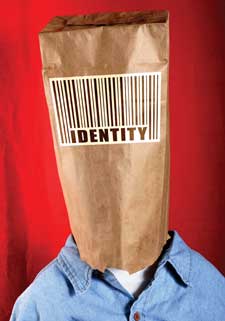Magazine
Multiplicity of Identities

Seek not, and ye shall find
When we launched Little India 16 years ago, we saw the exploration of the Indian American identity as one of the core editorial missions of the magazine. Over the years, Little India has monitored the evolution of the community and helped paint its broad strokes.
Nearly a decade ago, a Little India article wondered, “What’s in a Name?” probing the practice of many Indians to adopt Anglicized names. A few years later, a cover story in Little India questioned, “How Authentic an Indian Are You?” examining what it means to be Indian in America. In 1995 and again in 1997, Little India organized ground-breaking conferences on the Indian American identity at Montclair State University and Rutgers University. Last month, we explored the “Midway Generation,” the Indians who migrated primarily in the 1980s and have now spent a majority of their life in America, as well as the “Fading Generation,” Indians in the terminal stages of life. Over the years, several of our stories have delved into second generation Indian Americans, who were born U.S. citizens, as well as the 1.5 generation, those born in India, but who grew up in the United States. Many Indian Americans struggle both consciously and unconsciously with their identity and even more are apprehensive of their tenuous bonds with the second generation. These concerns are understandable as we figure out our space in the world we have elected to now call home. At Little India, we have learned that individual identity transforms and mutates over time. Personal perspectives shift, sometimes gradually, sometimes seismically, 2 years, 5 years or 10 years after migrating to the United States. Individuals react differently to their encounters with the New World. Some are transformed dramatically, embracing new friendships, relationships, even culinary or sports interests with alacrity. Others, by contrast, rediscover what they left behind, spiritually, aesthetically, intellectually, and prefer the comfort of Indian enclaves. Yet others venture out into multicultural relationships, adding new dimensions to their identity. Some feel the tug of traditions they might have actually disdained back home. Age is a factor too; as the demands of work and career diminish, the urge and avenues for personal discovery grow ever stronger. Our collective identity is a celebratory bazaar of all these different tugs and pulls, and others. Of the forces of new immigrants v long term residents; of Indians concentrated in the urban centers of New York, San Francisco, Chicago and Houston v those living in scattered remote towns; of the different economic, educational and professional circumstances of the individuals within the community. It is influenced by the second generation, who often negotiated their identity under peer pressure by spurning their Indian roots in high school only to rediscover and celebrate them in college and as adults. In recent years, the transformation of the community from stereotyped medical and engineering professionals to rising software stars, trend setters in arts and entertainment and ever so tentatively the world of law and politics, as well as India’s economic ascendancy have all impacted the collective consciousness of the community. By far the single most significant conclusion we have drawn from our 16 years as observers and interpreters of the Indian community, perhaps one that might help those wrestling hardest, is that we have a multiplicity of identities, both individually and collectively. The struggle over identity is in the struggle, not the identity. To those in its elusive quest, we say, seek not and ye shall find! |

